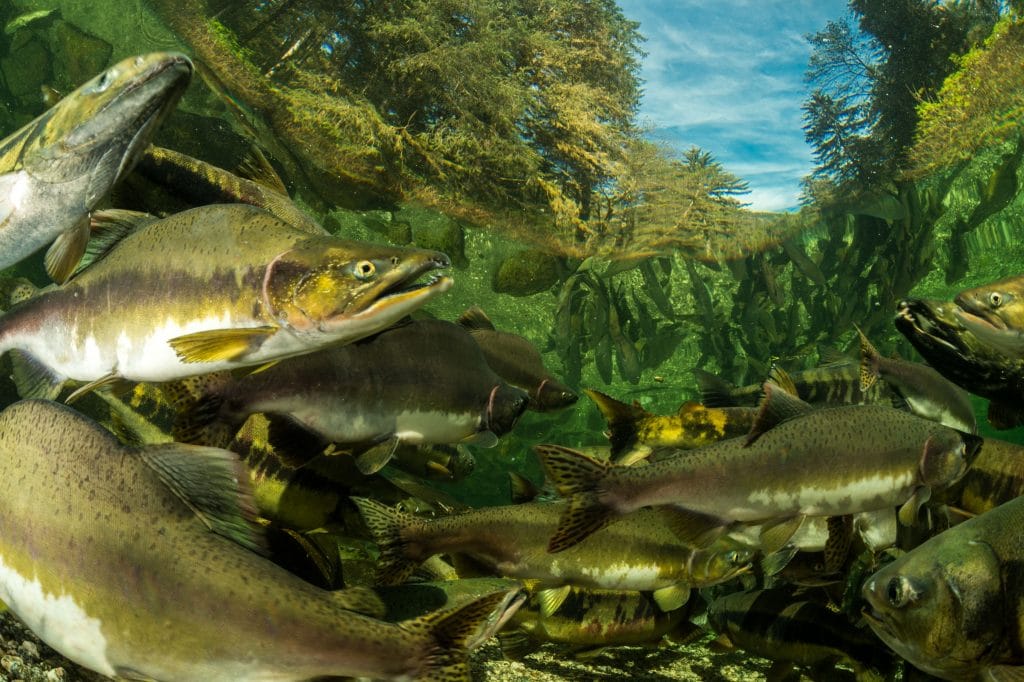Nearly seven weeks late, the Canadian government quietly released the draft transition framework for British Columbia’s salmon farming industry late Friday (September 20) afternoon. While a critical step in maintaining Canada’s promise to transition away from open net-pen salmon farming, it is notably lacking in concrete, actionable steps to guide this transition forward into reality. The Government of Canada’s initiative outlines a broad framework that emphasises environmental protection and the development of sustainable aquaculture technologies, such as closed containment systems. However, much of the plan remains vague, particularly when it comes to specific measures and timelines that will ensure this promise is fulfilled by 2029.
Community Support
More than 120 First Nations in British Columbia (B.C.), and the majority of Canadians support the removal of open-net pens. A critical aspect of the plan, however, is its focus on supporting First Nations, workers, and local communities, many of whom have economic ties to the salmon farming industry.
While the draft plan acknowledges the importance of protecting these communities from the potential negative impacts of the transition, there are disappointingly few detailed strategies or tangible actions for how this support will be delivered. It speaks broadly about training, reskilling, and economic development opportunities but provides no clear roadmap for implementation or funding mechanisms to ensure these supports are timely and effective in order to avoid more delays in the process.

New Systems
Furthermore, the plan’s emphasis on promoting innovative and clean aquaculture technologies, while commendable, suffers from a lack of concrete proposals. It encourages investment in closed containment systems and positions B.C. as a potential global leader in sustainable aquaculture, yet offers little in terms of specific incentives or frameworks to attract such investment from industry. Closed-containment can include a range of technologies and operating environments—from ocean- to land-based production systems—with varying degrees of isolation from the environment.
Concerns remain with in-water “closed containment” systems that allow for the exchange of water between the farm and marine environment, allowing for pathogen transfer to continue. Typically, the more “closed” a system is, the more robust the system is at protecting wild salmon. While there are successful closed containment land-based facilities already in operation in B.C., other closed containment technologies being considered are still largely experimental or have failed testing periods in the past.
Timelines
There is also an absence of clear criteria or timelines for how the transition will be evaluated and what benchmarks will define success. Without a solid foundation of actionable steps, the plan risks being more aspirational than transformative, and wild salmon are running out of time. Directly or indirectly, we all rely on wild salmon, an essential element of coastal cultures and traditions. Human communities rely on salmon for sustenance and livelihoods. Despite this, B.C. stands alone on the Pacific coast of North America in putting the economic interests of multinational corporations ahead of wild salmon conservation.
As the country with the longest coastline in the world, Canada should strive to be a global leader in marine conservation instead of falling behind. While existing open-net pen farms must phase out in the next five years, the draft plan acknowledges the transition to other forms of aquaculture will likely take longer than that. However, when the ban on open-net salmon farming comes into effect, industry will have had a decade to prepare for, and implement the necessary changes to salmon farming technology in B.C. after the Liberal governments’ 2019 announcement to when the ban is finally implemented in 2029

Monitoring & Accountability
Though we commend the government’s commitment to enforcing enhanced monitoring and oversight for the remaining time that open net-pen farms continue to operate, a glaring omission in the plan is the requirement of third-party oversight. While the plan proposes enhanced monitoring and compliance for remaining open net-pen farms, there is no mention of independent bodies to oversee data collection, reporting, or environmental monitoring. This lack of external accountability raises concerns about transparency and the reliability of the information that will be used to assess the continued impact of operating farms. Without third-party verification, the integrity of the data being reported is largely in the hands of industry itself, which undermines trust in the process.
What's next?
As it stands, the draft transition plan serves as a starting point for a more tangible one to be made. Further consultations are being scheduled and a final version of the plan is expected to arrive in 2025.
Pacific Wild is committed to participating in the consultation process and pressing the government to place the ban on open-net pen salmon farms in concrete regulations as soon as possible. Continuing to stall the complete removal of these open-net farms from the Pacific Ocean now, prioritizes the interests of salmon farming multinationals over wild salmon. Widespread acceptance of the harmful effects of open-net pen salmon farming and the science supporting a ban, runs counter to the weak federal decision that delays action. Moreover, it handily places the government’s obligation to fulfill the ban into an uncertain, upcoming election cycle.

